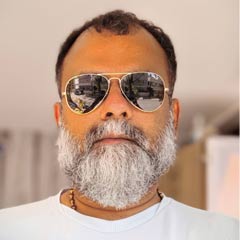Bengaluru: Indian Space Research Organisation (ISRO) chairman Dr Kailasavadivoo Sivan said on Wednesday that the health of Chandrayaan-2 satellite, currently orbiting the earth along with the Vikram (lander) and Pragyaan (rover), is in an excellent condition.
Speaking to Onmanorama, Dr Sivan said the satellite parameters are all normal and the scientists are gearing up for the orbit-raising manoeuvres.
“We will be undertaking the first orbit-raising manoeuvre today,” Sivan said.
Scientists at the ISRO Telemetry, Tracking and Command Network (ISTRAC) based out of Bengaluru, are monitoring the satellite and will undertake the next session of missions.
“We are extremely happy by the performance of GSLVMkIII. As I have said earlier, the vehicle has really surprised us with its performance during the launch. It did its duties beyond our expectations, making our job easier for the crucial set of manoeuvres,” the ISRO chief said.
He said his experienced team has taken all precautions to ensure that the prolonged, post-launch activities go by the script. As per current plan, Vikram is expected to soft-land on the Moon on September 7 and along with Rover the scientific experiments are to be undertaken for 12 days (one lunar day). The Chandrayaan-2 Orbiter is expected to do its duties for a year.
“Everything works as per a plan. We are taking every step keeping in mind one day at a time. It’s a combined effort of multiple teams in ISRO,” he said.
He said setbacks have never put space scientists on their back foot and ISRO has a well-oiled philosophy to take on any challenges head-on.

“Ours is never a minor-issues oriented approach to any issues that we face. Small setbacks don’t dent our spirits and we have a vision to reach our goals. Even in Chandrayaan-2 mission, when the launch had to be aborted owing to a glitch, we were confident of plugging all loopholes well in time,” Sivan said.
He said the scientists have adopted a holistic approach while dealing with setbacks and uncertainties.
“No point in splitting hairs over minor issues. We were all focused towards the launch and that was our single-minded approach. The system has the rich experience to handle the in-between events, including any setbacks,” he added.
Reiterating his earlier statements, Sivan said the lunar South Pole was picked for the landing owing to the massive space available in the region.
“The lunar surface area here is under the shadow and is larger than the North Pole as pointed by various studies. The possibility of finding water or its presence is more in these shadowed spots,” he added.
As reported earlier, Chandrayaan-2 will attempt to soft-land Vikram between two craters named Manzinus-C and Simpelius-N, which is at a latitude of about 70° South.
While Chandrayaan-2 will be on the spotlight for the next two months, ISRO is gearing up for year-long celebrations to mark the birth centenary of Dr Vikram A Sarabhai, revered as the father of Indian space programmes. Sarabhai was born on August 12, 1919 in Ahmedabad.
The celebrations are to take off on August 12 this year and culminate on the same day next year. Prime Minister Narendra Modi, President Ramnath Kovind and a host of space scientists are set to be part of the high-profile centenary celebrations.
Last year on August 12, a bust of Dr Vikram was unveiled at Antariksh Bhavan. A centenary team has been on the works for a year now in the planning and execution of the event.
(The writer is an independent aerospace and defence journalist, who blogs at Tarmak007 and tweets @writetake.)

















